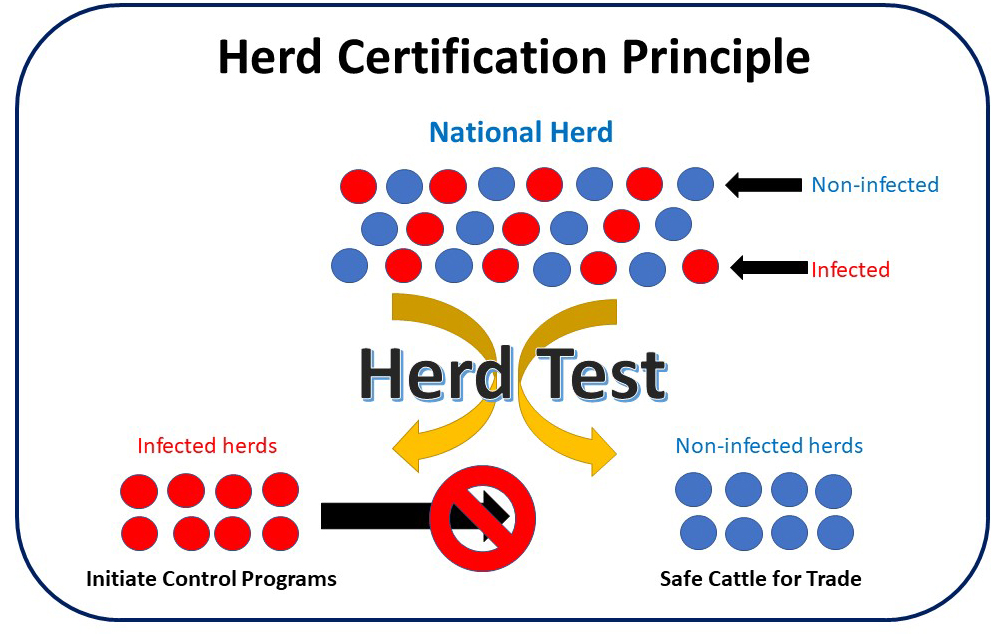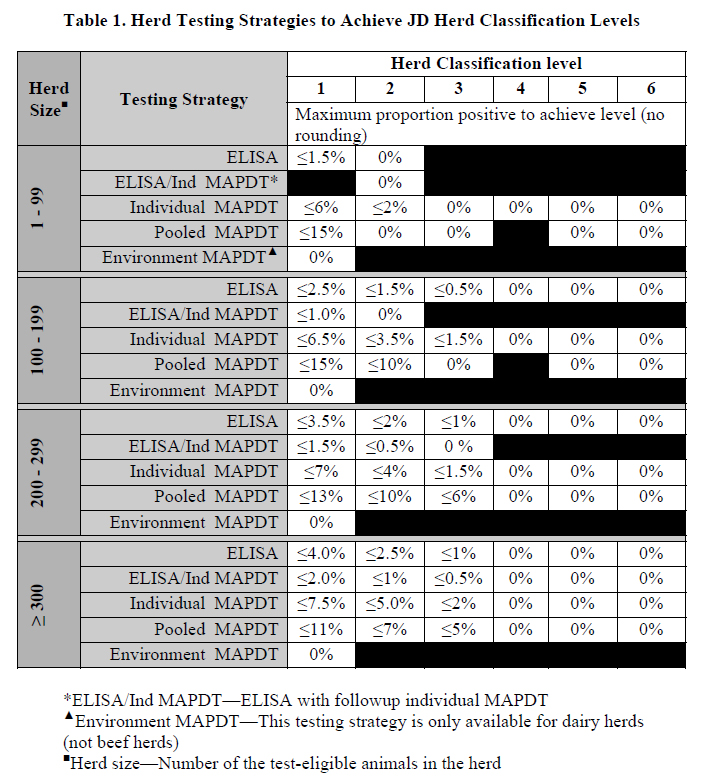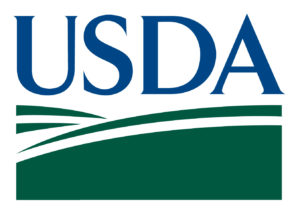Certification programs help to provide source of Johne’s-free livestock. This is critical for animal industries needing to halt the spread of this infection.
Herd certification is loosely defined on this web page as any official program designed to classify herds according to the probability that individual cows in those herds are infected with Mycobacterium avium subspecies paratuberculosis (MAP).

Goals
The primary aim of certification programs is two-fold:
- Provide a simple system to communicate to cattle buyers the risk of buying a MAP-infected animal.
- Stop the spread of this infection to non-infected herds. Herd certification is the foundation of paratuberculosis prevention.
Basic Concepts
Johne’s disease should be considered a herd health problem, not just an individual animal disease. Certification programs apply laboratory tests to classify herds by levels of infection ranging from not infected at all to very likely infected. Often such programs have regulations that participating herd owners must follow regarding the sources for replacement cattle. These rules are designed to help herd owners avoid bringing MAP-infected cattle into their herds without compromising their ability to do business.

The schematic diagram above illustrate these two basic concepts: 1) apply a herd test to sort the herds and 2) prevent movement of infected cattle into the non-infected herds. Of course, this works best if all herds participate and is only achievable with one application of a test to all herds if the test was perfect. Lacking perfect tests, we must repeat testing annually.
NOTE: In this graphic, the term “national herd” does not have to represent all the beef cattle herds in the country. It can just as easily represent all of the herds in a specific locale or of a specific breed. Breed associations can adopt these same principles to stop the ongoing spread of Johne’s disease among their elite breeders: it’s the right thing to do for the health and welfare of their animals and their organization.
Some programs, such as the one in the U.S., classifies herds by the percentage of the herd that is infected (prevalence). Others are directed only at the non-infected herds. Annual testing is used to graduate herds to higher levels of certainty that they are free of the infection. The reason herd tests must be repeated regularly is that diagnostic tests, for Johne’s disease or any other disease, are not 100% sensitive and specific. This means that on occasion infected herds are not detected (false-negative herd test) or non-infected herds are incorrectly classified as infected (false-positive herd test). Programs are designed to minimize such errors and a program epidemiologist is charged with monitoring test results on participating herds to be sure the tests are properly applied and interpreted. Most programs have an appeal process for the owners to use if they think the test results are incorrect. The programs also incorporate confirmatory tests to settle disputes. Annual herd testing and herd classification for Johne’s disease is very similar to what was done to control and eventually eradicate bovine tuberculosis (TB) and brucellosis (Bang’s disease) from many countries around the world using tests of comparable accuracy.

Repeated testing of a herd that never introduces new animals from other herds or introduces only those animals of the same certification status, improves the probability the herd is not infected. This is called serial or sequential testing. It is possible, over time and with annual herd testing, to eliminate infected herds from the population of test-negative herds. This is accomplished by insuring that herds found to be infected in a given geographic area are not permitted to sell animals into the test-negative, presumably non-infected herds.
The USDA Uniform Program Standards for the Voluntary Johne’s Disease Control Program (effective September 1, 2010) are available here: USDA Program Standards.
Computer models, practical experience, and logic all support the same premise about herd certification programs:
- The more adult animals that are tested, the greater the confidence (probability) that the herd is correctly classified as either infected or not infected.
- The more times you test a herd, the greater the confidence (probability) the test-negative herd is NOT infected.
Examples of National Programs for Johne’s Disease.
 The latest version of the program is available above (40 pages). The USDA website regarding national control and eradication efforts is here.
The latest version of the program is available above (40 pages). The USDA website regarding national control and eradication efforts is here.
 The Dutch program is described here.
The Dutch program is described here.
![]() The Australian Program is described here.
The Australian Program is described here.
![]() The UK program, called the National Action Group on Johne’s, is in Phase II of the National Johne’s Management Plan (NJMP) which seeks to manage and reduce the incidence of Johne’s disease on farms through implementing one of the six strategies agreed by the NJMP group, and monitored on each farm by accredited vets. Click here for more details.
The UK program, called the National Action Group on Johne’s, is in Phase II of the National Johne’s Management Plan (NJMP) which seeks to manage and reduce the incidence of Johne’s disease on farms through implementing one of the six strategies agreed by the NJMP group, and monitored on each farm by accredited vets. Click here for more details.

